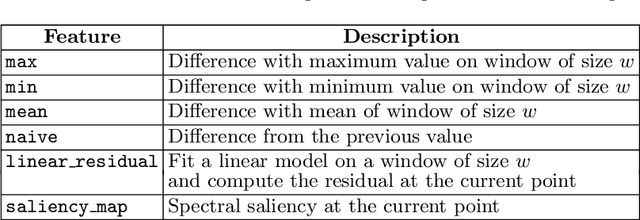Thai V. Hoang
Data Augmentation for Multivariate Time Series Classification: An Experimental Study
Jun 10, 2024



Abstract:Our study investigates the impact of data augmentation on the performance of multivariate time series models, focusing on datasets from the UCR archive. Despite the limited size of these datasets, we achieved classification accuracy improvements in 10 out of 13 datasets using the Rocket and InceptionTime models. This highlights the essential role of sufficient data in training effective models, paralleling the advancements seen in computer vision. Our work delves into adapting and applying existing methods in innovative ways to the domain of multivariate time series classification. Our comprehensive exploration of these techniques sets a new standard for addressing data scarcity in time series analysis, emphasizing that diverse augmentation strategies are crucial for unlocking the potential of both traditional and deep learning models. Moreover, by meticulously analyzing and applying a variety of augmentation techniques, we demonstrate that strategic data enrichment can enhance model accuracy. This not only establishes a benchmark for future research in time series analysis but also underscores the importance of adopting varied augmentation approaches to improve model performance in the face of limited data availability.
Breaking Boundaries: Balancing Performance and Robustness in Deep Wireless Traffic Forecasting
Nov 28, 2023Abstract:Balancing the trade-off between accuracy and robustness is a long-standing challenge in time series forecasting. While most of existing robust algorithms have achieved certain suboptimal performance on clean data, sustaining the same performance level in the presence of data perturbations remains extremely hard. In this paper, we study a wide array of perturbation scenarios and propose novel defense mechanisms against adversarial attacks using real-world telecom data. We compare our strategy against two existing adversarial training algorithms under a range of maximal allowed perturbations, defined using $\ell_{\infty}$-norm, $\in [0.1,0.4]$. Our findings reveal that our hybrid strategy, which is composed of a classifier to detect adversarial examples, a denoiser to eliminate noise from the perturbed data samples, and a standard forecaster, achieves the best performance on both clean and perturbed data. Our optimal model can retain up to $92.02\%$ the performance of the original forecasting model in terms of Mean Squared Error (MSE) on clean data, while being more robust than the standard adversarially trained models on perturbed data. Its MSE is 2.71$\times$ and 2.51$\times$ lower than those of comparing methods on normal and perturbed data, respectively. In addition, the components of our models can be trained in parallel, resulting in better computational efficiency. Our results indicate that we can optimally balance the trade-off between the performance and robustness of forecasting models by improving the classifier and denoiser, even in the presence of sophisticated and destructive poisoning attacks.
* Accepted for presentation at the ARTMAN workshop, part of the ACM Conference on Computer and Communications Security (CCS), 2023
Little Help Makes a Big Difference: Leveraging Active Learning to Improve Unsupervised Time Series Anomaly Detection
Jan 25, 2022



Abstract:Key Performance Indicators (KPI), which are essentially time series data, have been widely used to indicate the performance of telecom networks. Based on the given KPIs, a large set of anomaly detection algorithms have been deployed for detecting the unexpected network incidents. Generally, unsupervised anomaly detection algorithms gain more popularity than the supervised ones, due to the fact that labeling KPIs is extremely time- and resource-consuming, and error-prone. However, those unsupervised anomaly detection algorithms often suffer from excessive false alarms, especially in the presence of concept drifts resulting from network re-configurations or maintenance. To tackle this challenge and improve the overall performance of unsupervised anomaly detection algorithms, we propose to use active learning to introduce and benefit from the feedback of operators, who can verify the alarms (both false and true ones) and label the corresponding KPIs with reasonable effort. Specifically, we develop three query strategies to select the most informative and representative samples to label. We also develop an efficient method to update the weights of Isolation Forest and optimally adjust the decision threshold, so as to eventually improve the performance of detection model. The experiments with one public dataset and one proprietary dataset demonstrate that our active learning empowered anomaly detection pipeline could achieve performance gain, in terms of F1-score, more than 50% over the baseline algorithm. It also outperforms the existing active learning based methods by approximately 6%-10%, with significantly reduced budget (the ratio of samples to be labeled).
 Add to Chrome
Add to Chrome Add to Firefox
Add to Firefox Add to Edge
Add to Edge